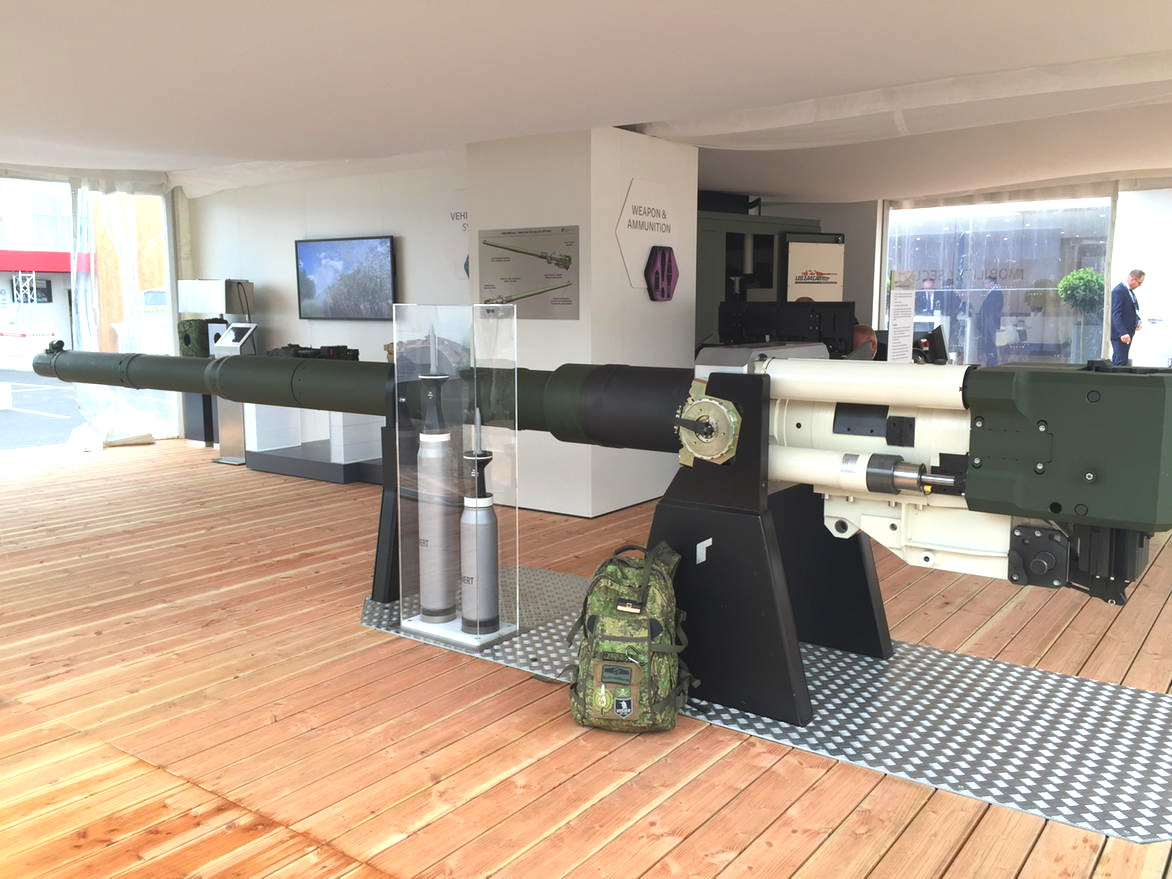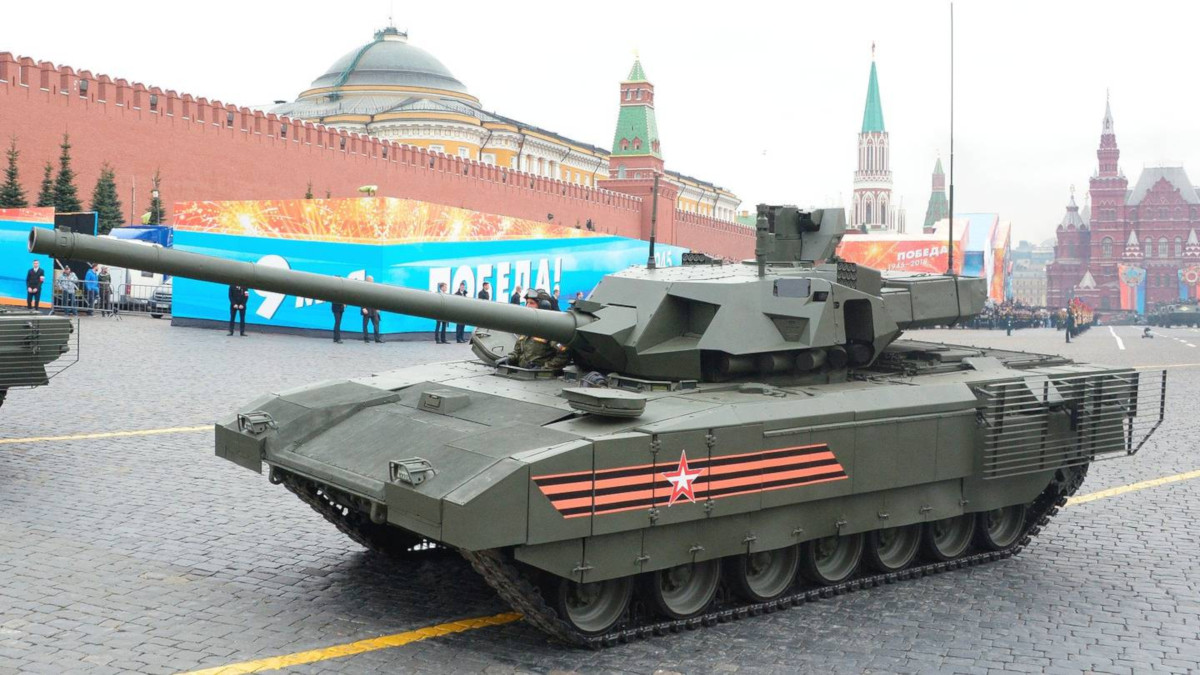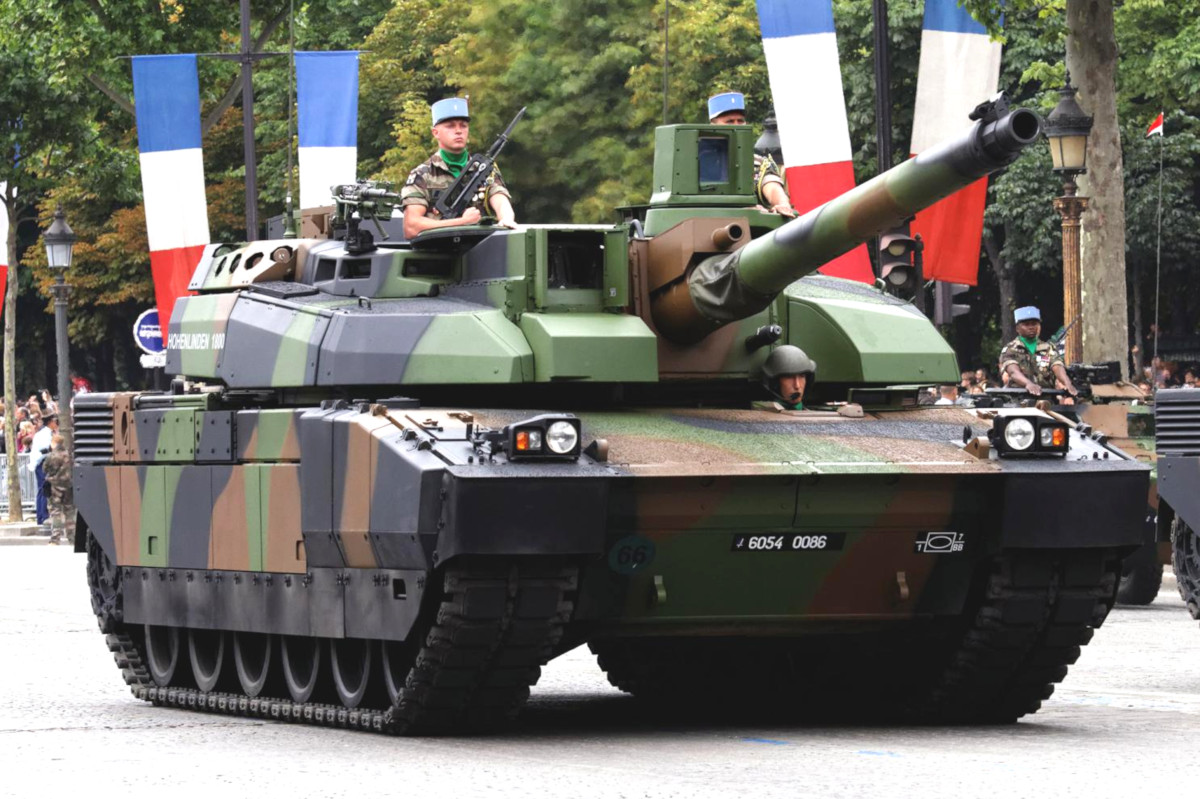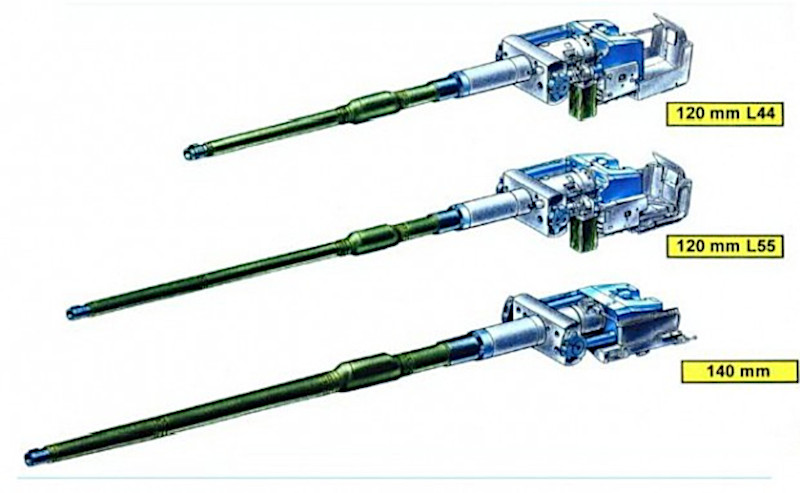French defense contractor Nexter has reportedly been testing a modified Leclerc main battle tank with a massive 140mm main gun as part of the development of a future Franco-German tank, known as the Main Ground Combat System, or MGCS. For decades, France, as well as Germany, among many others, have considered adding bigger cannons to its tanks to improve their armor penetration and range capabilities, but have repeatedly decided not to do so. So, it still remains to be seen how seriously they’ll pursue this course of action now.
Jane’s 360 reported the news, which the outlet had learned at the International Armored Vehicles (IAV) 2019 conference in London, on Jan. 24, 2019. The up-gunned Leclerc has fired more than 200 rounds successfully and Nexter claims the weapon is 70 percent more effective than existing NATO-standard 120mm tank guns. The MGCS program, which began in 2012, aims to replace France’s Leclercs and Germany’s Leopard 2 tanks with a common design by 2035.
It is unclear if the Leclerc configuration that Jane’s is referring to is materially different from the one that first emerged in 2016. “This is understood to be the first time that a 140 mm gun has been successfully integrated onto a 50-ton MBT [main battle tank],” according to the story, but this could be a reference to a development program that has now been ongoing for multiple years.
French defense company GIAT, which subsequently transformed into Nexter, first proposed mounting a 140mm gun onto the Leclerc back in 1996, four years after the tank first entered French service. The company specifically developed an enlarged turret to house a gun of this caliber that France’s Arsenal de Bourges had developed.
The French military passed on this T4 turret and it went into storage. Circa 2015, Nexter reportedly reinstalled in onto a chassis that had belonged to a turretless Leclerc MARS armored recovery vehicle. It is pictures of this combination, dubbed Le Terminateur, or The Terminator, which first appeared in a French magazine two years later. Since then, additional images of the tank, now wearing a hard-edged tan-green camouflage scheme known as Scorpion have also appeared online.
Regardless, the testing of the gun does point to renewed interest in a larger caliber main gun the final MGCS tank design. In 2016, Germany’s Rheinmetall, which is working together with Nexter on the Franco-German vehicle, also publicly displayed a 130mm gun at that year’s Eurosatory military trade show in France. Rheinmetall had previously worked on a 140mm design, as well.

A reported requirement for the MGCS is for its gun to be at least 50 percent more capable than the existing 120mm types on either the Leclerc or Leopard 2. A larger 130mm or 140mm gun would certainly offer improved range and armor penetration capabilities.
The driving force behind this demand appears to be, at least in part, the appearance of Russia’s T-14 Armata tank, which features an improved 125mm 2A82-1M main gun with more capable ammunition.
The 2A82M-1M is apparently sized to fit in the same space in a turret as the older, Soviet-era 2A46 125mm gun, meaning that it could potentially be an upgrade option for Russia’s existing designs, such as the T-90. There have also long been reports in Russian media that the Kremlin is considering adding a larger 152mm main gun onto the Armata, as well, which could out-gun existing NATO tanks and their 120mm guns.

China has reportedly been testing larger caliber main guns, as well. So far, though, none of these Russian or Chinese efforts have led to an actual operational design. There are also very real questions about how much the Kremlin can even afford to modernize its tank fleets, at all.
While a new 130mm or 140mm gun certainly offers a counter to these developments, real or not, it is not without its drawbacks, too. The most immediate issue is the size of the rounds, which will be bigger than their 120mm counterparts and require larger ammo storage options within any future tank.
The 140mm-armed Leclerc, with its enlarged turret, reportedly still requires two-piece ammunition, with the shell separate from the propellant. Even then, it can only hold 31 rounds, nine fewer than the standard version of the tank.

Bigger rounds have second-order logistical impacts, as well. Each shell weighs more and takes up more space, requiring more effort to deliver the same amount of ammunition to units in the field.
A 130mm or 140mm also obviously wouldn’t be able to use existing stockpiles of 120mm ammunition and wouldn’t have ammunition interchangeable with other tanks still using the smaller guns. France and Germany are both members of NATO and this could potentially cause problems with the alliance’s standardization and interoperability requirements.
In addition, in the past, the added range and penetration offered the bigger guns offered was relatively modest compared to what engineers could squeeze out of longer 120mm cannons with faster-flying ammunition. In the 1990s, Germany was among many countries to go this route with the Leopard 2A6 variant, which introduced a longer 120mm gun from Rheinmetall that extended the maximum range of the tank by around 1,600 yards – almost a mile – and significantly increased its ability to penetrate enemy armor.

These various factors contributed to decisions not just in France, but also in Germany, the United Kingdom, and the United States, to abandon previously plans to add larger caliber main guns to their respective main battle tank designs. The end of the Cold War and a reduced emphasis on conventional ground operations also played a part in the death of those programs.
At the same time, these developments may be reaching the limit of how much performance it is possible to get out of a 120mm gun and still have that weapon be practical. Lengthening the barrel is a relatively easy way to increase range and muzzle velocity, but creates new problems the longer it gets.
A longer barrel might require higher-pressure ammunition to ensure the shell reaches a consistent peak speed before leaving the muzzle, which would put more strain on the entire gun. The extended proboscis would also increase the tank’s physical footprint, potentially making it more difficult to transport. The U.S. military has had to contend with similar issues in the development of its extended-range 155mm howitzers, which also feature significantly longer barrels than their predecessors.

It may become increasingly attractive then to go to a larger caliber, but shorter main gun instead, regardless of the design demands and logistical issues this might create in the process. It’s worth noting that Rheinmetall’s experimental 130mm gun is shorter than its improved 120mm gun, but is more capable.
There has already been a broad level of renewed interest in the potential of larger caliber main guns for tanks across NATO since 2014, when Russia seized of Ukraine’s Crimean Peninsula and subsequent began actively supporting for separatists in that country. After that, the United States and other members of the Alliance rushed to reinvigorate their more traditional combat capabilities, with a particular emphasis on improved armored vehicles, among other things.
Beyond tanks, various NATO members have been similarly looking to up-gun lighter armored vehicles to either better match or outrange their Russian counterparts, too. The U.S. Army alone has added a 30mm cannon to some of its Stryker wheeled armored vehicles, which previously only had a .50 caliber machine gun or 40mm automatic grenade launcher. That service is also looking to replace its tracked Bradley Fighting Vehicles and its 25mm main gun with a new design that might come armed with a 50mm cannon.
At present, Nexter and Rheinmetall have yet to publicly unveil their proposed design, even in mockup or model form, with or without a new, larger main gun. Nexter and German armored vehicle maker Krauss-Maffei Wegmann, which merged to form KMW+Nexter Defense Systems (KNDS) in 2015, did debut what they called European Main Battle Tank (EMBT) at the Eurosatory arms fair in 2018, but this vehicle featured a Leopard 2 hull with a standard Leclerc turret with a 120mm gun.

KNDS said this tank was a technology demonstrator and meant to show off what the new multi-national conglomerate was capable of producing. However, the firm did suggest it could be an attractive option for smaller countries, especially those with bridges and other infrastructure that simply cannot handle the weight of larger main battle tanks.
All told, it still remains to be seen whether any new Franco-German tank, or any other upcoming Western design, will come armed with a 130mm or 140mm main gun or whether this concept will end up being shelved yet again.
Contact the author: jtrevithickpr@gmail.com
